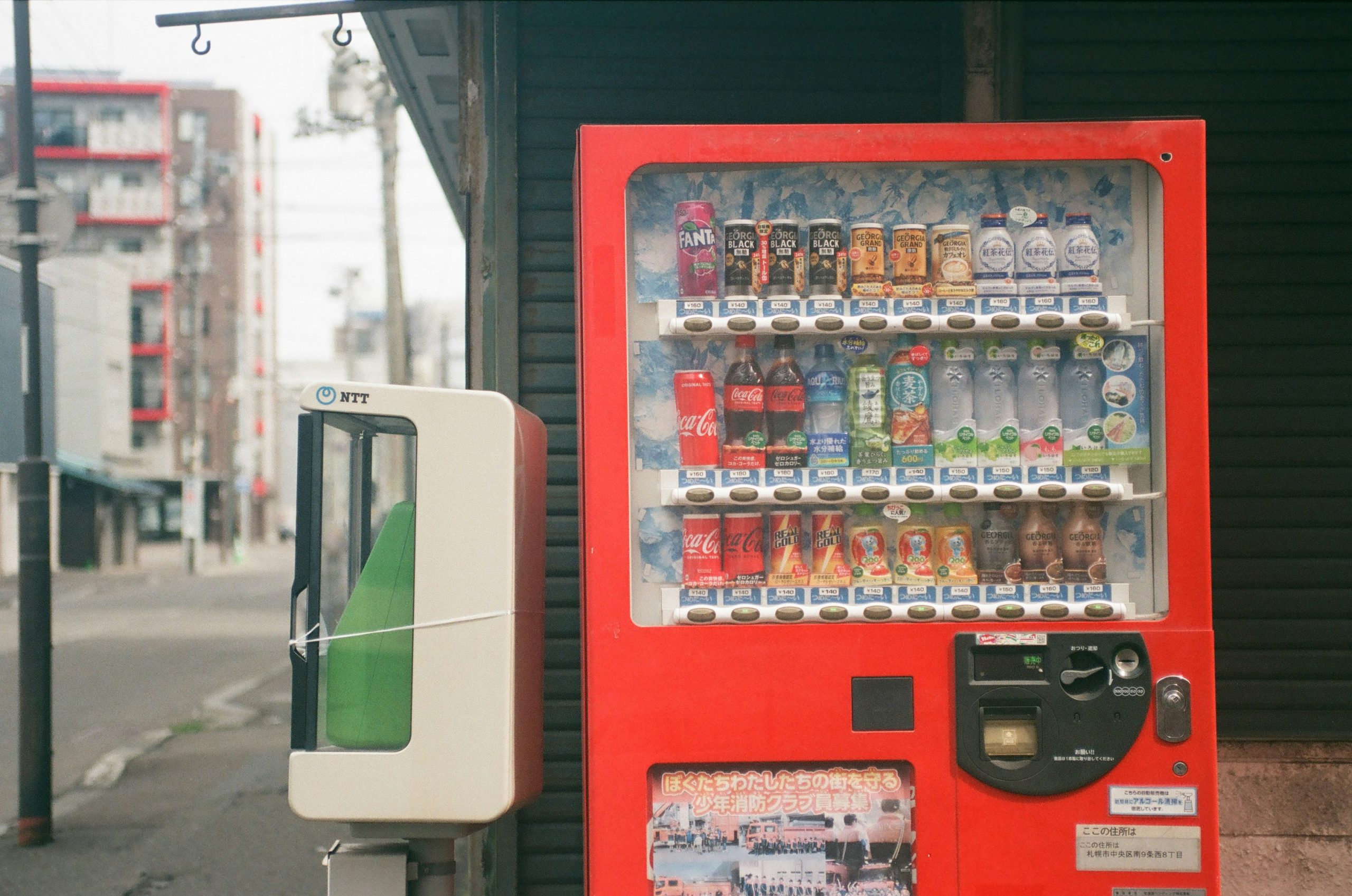
Starting a vending machine business is an exciting opportunity for entrepreneurs seeking a flexible and scalable business model. If you’re looking to break into this industry, becoming a vending machine supplier can be your ticket to steady income and business growth.
This blog will guide you through everything you need to know to start your vending machine supplier business—from understanding the industry and selecting a niche to marketing and scaling your operations. Whether you’re a complete beginner or someone exploring new ventures, this guide will give you actionable insights to get started.
Why Start a Vending Machine Business?
The global vending machine market was valued at $18.8 billion USD in 2021 and is expected to grow steadily in the coming years. Vending machines are not just limited to snacks and drinks anymore. They’re evolving to offer products ranging from tech gadgets to fresh meals. But why is this business so appealing?
- Low Overhead: Once you acquire the machines and stock them, most operational costs are limited to maintenance, restocking, and location rental fees.
- Passive Income: Vending machines operate 24/7 and require only periodic servicing, making them an excellent source of passive income.
- Flexibility: You can start with one or two machines and expand as you grow—making it a scalable model for any budget.
Step 1: Understand the Role of a Vending Supplier
Before jumping in, it’s essential to understand what a vending machine supplier does. A supplier doesn’t just provide the vending machines; they also ensure that the machines are well-stocked, in good working condition, and placed in high-traffic locations.
Your primary responsibilities as a vending supplier include:
- Procuring vending machines and supplies
- Securing strategic vending locations
- Restocking products regularly
- Providing machine repairs and maintenance
- Building relationships with vendors and clients
Step 2: Determine Your Niche
The vending machine industry is diverse, and specializing in a specific category can help you stand out. Selecting a niche ensures that you target the right customers while maximizing profitability. Common vending machine niches include:
- Snacks and beverages (candy bars, chips, soda)
- Healthy snacks (granola bars, fresh fruit, bottled water)
- Office supplies (pens, notebooks, USB drives)
- Tech gadgets (headphones, charging cables)
- Specialty food (frozen meals, fresh food)
Take time to research your target customer base. If you’re targeting upscale gyms or schools, for example, offering healthy snacks will likely perform better than conventional sugary drinks and snacks.
Step 3: Invest in Equipment
Having high-quality vending machines is crucial to your business’s success. Choose machines that are reliable, user-friendly, and equipped with modern payment methods. Here are some factors to consider:
- New vs. Used Machines:
- New Machines: Often equipped with advanced features such as cashless payment options (credit/debit card readers, mobile wallets) but come with a higher upfront cost.
- Used Machines: More budget-friendly but may need repairs or upgrades.
- Payment Options:
More people are opting for cashless payments today. Machines equipped with credit card readers or mobile wallet compatibility will appeal to a broader audience.
- Machine Types:
Decide whether you want snack-only machines, beverage-only machines, or combo machines that can handle both.
- Energy Efficiency:
Look for energy-efficient vending machines, as they can save you money in the long run on electricity costs and are more environmentally friendly.
Step 4: Secure Prime Locations
Location is everything in the vending machine business. A well-placed vending machine is more likely to generate revenue than one in a low-traffic area. To secure prime vending spots, consider:
- Ideal Locations:
High-traffic areas such as office buildings, schools, gyms, hospitals, airports, and busy retail stores.
- Permission and Rental Agreements:
Always negotiate rental agreements with property owners or managers. Some may request a flat monthly fee, while others may prefer a revenue-sharing model.
- Understand Customer Needs:
Tailor the product inventory to the demographics of the location. For instance, gym-goers might favor protein bars, while office workers might prefer quick coffee options.
Step 5: Stock the Right Products
Once you’ve set up your vending machine, it’s time to stock up with products that appeal to your audience. Here are a few tips:
- Buy Wholesale:
Purchase your supplies in bulk from wholesalers to reduce costs.
- Diversify Options:
Offer a mix of items to cater to a diverse group of customers.
- Track Trends:
Pay attention to emerging trends in food and drinks, such as demand for plant-based snacks or kombucha.
Pro tip: Monitor which items sell best and adjust inventory accordingly.
Step 6: Market Your Business
Don’t just wait for customers to find your vending machines; actively market your business to potential clients and location managers.
- Create a Website:
Showcase your vending solutions, track record, and customer testimonials online.
- Leverage Social Media:
Use Instagram and Facebook to share images of your machines and highlight your snacks or special offers.
- Utilize Local Advertising:
Reach out to schools, businesses, and community centers with flyers, emails, and direct communications.
Step 7: Ensure Regular Maintenance and Service
To keep customers satisfied, ensure your machines are always functional and stocked. Check your machines regularly for:
- Product freshness and restocking
- Payment system functionality
- Proper refrigeration for perishable items
- Cleanliness and presentation
Investing in maintenance can prevent costly breakdowns and keep customers coming back.
Step 8: Scale Your Operations
Once you’ve mastered operating a few vending machines, look for opportunities to grow. Scaling your vending machine business may include:
- Adding more locations
- Expanding product categories
- Offering customized vending machines for specific clients
- Partnering with local businesses or franchises
Start Your Vending Journey Today
Building a vending machine supplier business can be incredibly rewarding, offering financial freedom, passive income, and scalability. By following the steps outlined in this guide, you’ll be well on your way to creating a profitable venture.
Curious about taking that first step? Reach out to our team of experts for personalized advice and tips to turn your vending idea into a thriving business.
Frequently Asked Questions
1. How much does it cost to start a vending machine business?
The initial investment for starting a vending machine business can vary depending on factors such as the type of machines you purchase, the inventory you stock, and the locations you secure. On average, costs range from a few thousand dollars for a small setup to tens of thousands for a larger operation. It’s important to create a budget and research your options thoroughly.
2. What are the best locations for vending machines?
High-traffic areas such as office buildings, schools, gyms, hospitals, and shopping malls are ideal for vending machines. The key is to find spots with a consistent flow of people who are likely to use the machines. Always prioritize securing locations that align with the type of products you plan to offer.
3. How do I maintain and restock my vending machines?
Regular maintenance is crucial to ensure your vending machines are functioning properly and stocked with fresh products. Depending on the demand, you may need to restock weekly or even more frequently. Keeping track of sales data can help you determine when and how often to replenish inventory.
4. What are the most popular products to stock?
Popular items include snacks like chips, candy bars, and trail mix, as well as beverages such as bottled water, soda, and energy drinks. Healthier options, like granola bars or fruit snacks, are also in high demand, especially in wellness-focused environments. Tailor your product selection to suit the preferences of your target audience.
5. How do you price vending machine products?
Pricing your vending machine products requires balancing affordability for customers and profitability for your business. Research the average prices for similar items in your area and consider factors such as product cost, location, and target audience. Premium locations may support slightly higher prices, especially if convenience is a significant factor. Additionally, offering promotions or discounts for bulk purchases can encourage repeat business while maintaining customer satisfaction. Always monitor sales data to adjust pricing strategies as needed.
Another important aspect to consider is effective marketing strategies to attract and retain customers. Utilize both online and offline marketing channels to maximize your reach. Social media platforms are particularly powerful for showcasing your products, engaging with your audience, and promoting special offers. Pair this with offline methods such as flyers, local partnerships, or community events to create a well-rounded approach. Building a strong brand identity through consistent messaging, quality products, and excellent customer service will further help differentiate your business from competitors. Remember, a strategic combination of pricing, marketing, and customer engagement can drive sustained growth and success for your business.
Related Blog


